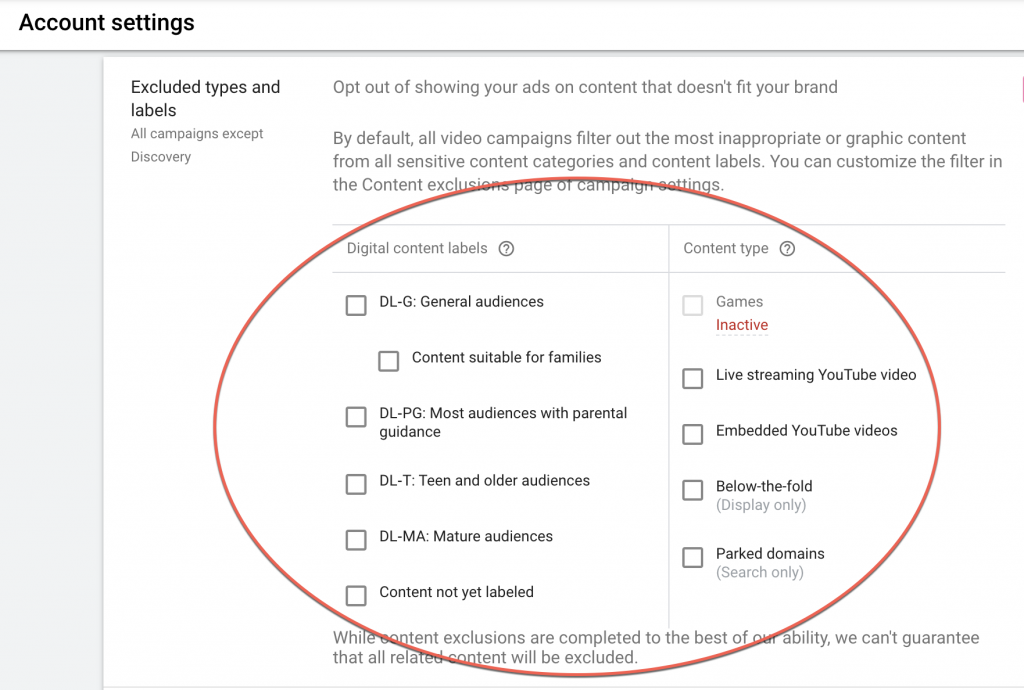Managing your company’s PPC program is a big responsibility.
A lot can go wrong.
And you might spend your evenings worrying about wasted ad spend, unauthorized account access, and damage to your brand.
The good news is that protecting your PPC program isn’t always a big laborious process.
Sometimes, even a small change can make a big difference.
Here are five simple actions you can take today to protect your PPC program and help you sleep better at night.
And they each take only five minutes to do.

1. Opt out of Google ad suggestions
With ad suggestions, Google automatically creates new ads for your account, drawing from your website content.
You have 14 days to review these suggestions. If you take no action, they go live!
If you have an agency managing your PPC account, these automated ads shouldn’t be an issue. Your agency should (they better be!) monitoring these suggestions daily so they don’t go live without review.
But if you’re managing your account yourself—and you don’t log in frequently—you could easily overlook these ads and wake up to find them live.
This is a problem because these ads typically aren’t great.
In fact, I don’t think we’ve ever accepted an auto-ad exactly as suggested.
We can always find some aspect that needs to be changed or can be improved.
And many of them fall WAY short.
This isn’t to suggest that ad suggestions are completely useless. Sometimes they can spark new ideas.
But you definitely don’t want to accept them whole hog.
Therefore, I suggest opting out of auto-applying ad suggestions at the account level.
Simply go into account settings and select “Don’t automatically apply ad suggestions” (circled in red below):

If you want, you can also give them feedback on your reasons for opting out.
By now, most of us are accustomed to providing two-step verification to log into almost any account, whether it’s our bank, salon or some other service.
2. Implement two-step verification
If you’re still relying on a simple password to keep your Google Ads account safe, it’s time to implement two-step verification.
If two-step verification seems like too much of a hassle, you can also mark your device as trusted—and then you won’t be asked for two-factor verification again on that device.
3. Review who has access to your Google Ads account
While you’re implementing two-factor verification, you might as well take a look at who has access to your account.
Sometimes people who’ve been out of the picture for a while still have access, which is a recipe for accidents.
For example, one of our clients works with different marketing agencies around the world to manage its international branches.
One day, we noticed that ALL of our campaigns for this account had been paused—with no warning!
We checked in with the client… and discovered that one of the other agencies had paused all our campaigns by mistake.
This other agency no longer needed access to this account, and the whole situation could have been avoided if they’d been removed at the time.
Thankfully, we caught this error quickly, avoiding any major repercussions.
4. Set up shared budgets
Another worry that can keep you up at night is erratic ad spend.
Campaign ad spend can vary widely in some accounts.
One campaign will tear through its budget quickly. Meanwhile, another campaign is hardly touching its allotment.
This puts you in the situation of playing “catch up” at the end of the month to make sure you’re utilizing the entire account budget.
Setting up these campaigns with one shared budget can smooth out those ups and downs. When one campaign is slow, the other can pick up the slack on the fly.
This helps keep your spending consistent throughout the month, which is particularly important in those industries—such as law—where clicks are super expensive and consistency is key.
5. Make account-level exclusions
Having your brand tarnished by inappropriate or offensive content is another worry.
You probably don’t want your ads showing up on websites that are sexually suggestive or relate to tragedy and conflict.
Or maybe you simply don’t want your ads to show up during YouTube live streams or “below the fold” on webpages.
Fortunately, you can easily avoid this with account-level exclusions.
All you have to do is change your PPC account settings to “opt out of showing your ads on content that doesn’t fit your brand.”
There are two steps to this:
First, in the content exclusions panel, click “excluded content” and select the sensitive content categories you want to exclude (circled in red):

My practice is to select all categories… because why take a chance?
Second, click “excluded types and labels” and select the ones you want to exclude as well (circled in red):

Even Small Changes Can Help Protect Your PPC Program
I hope I’ve convinced you that protecting your PPC program—and sleeping better at night—doesn’t always require major changes.
Sometimes, even the smallest of changes—ones that take only a few minutes—can make a big difference to the security of your PPC program.






